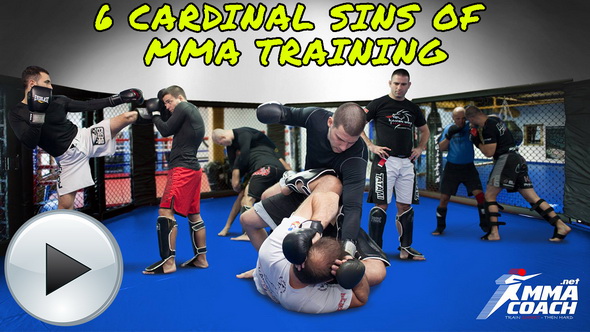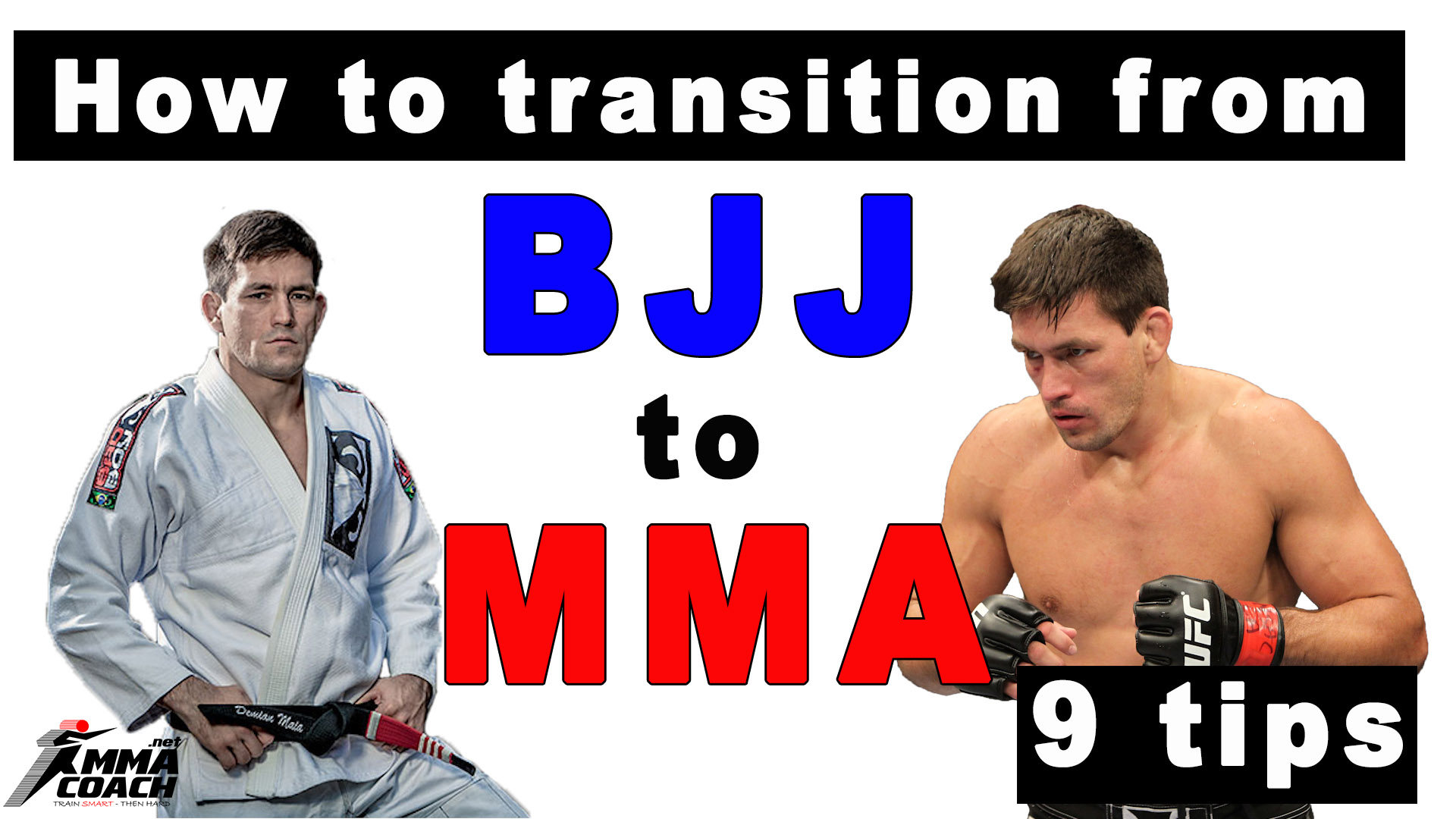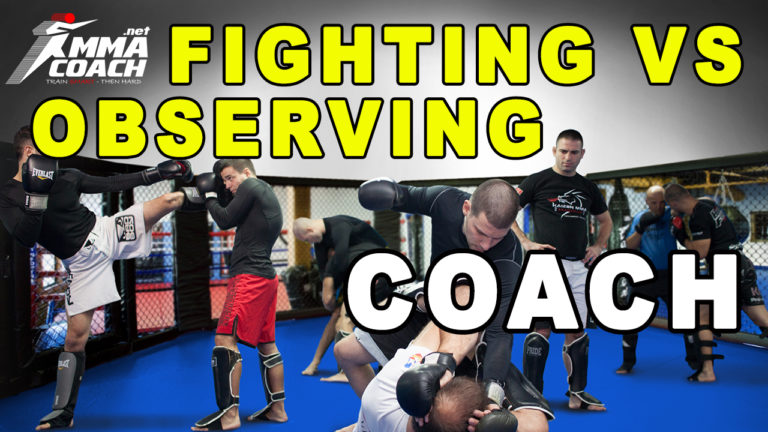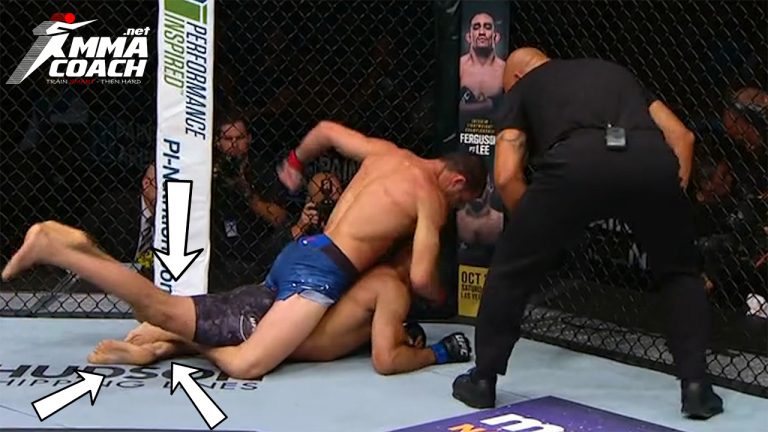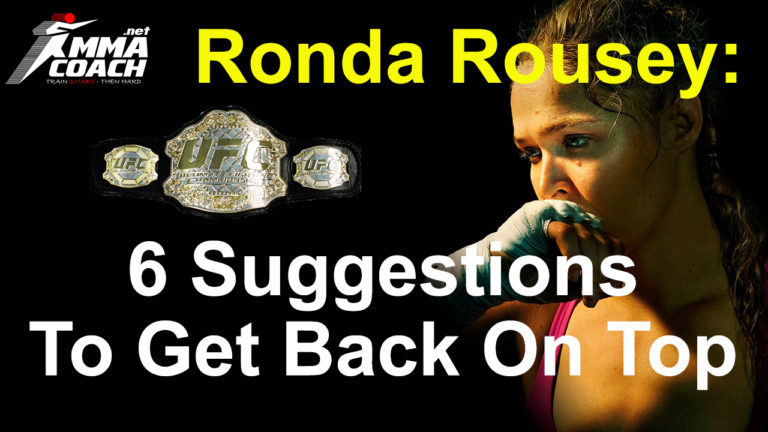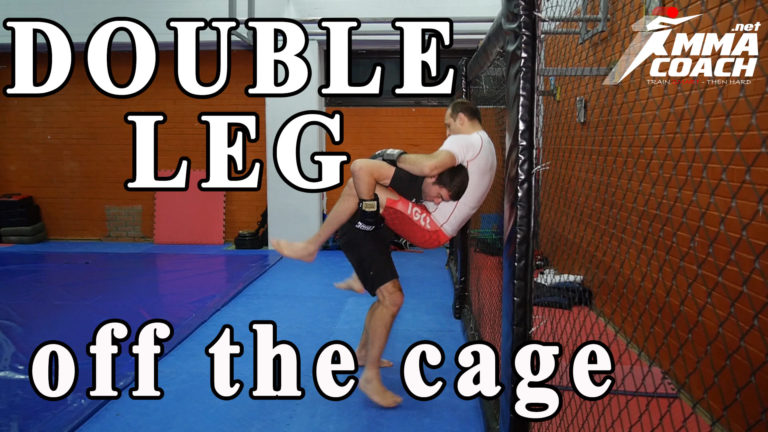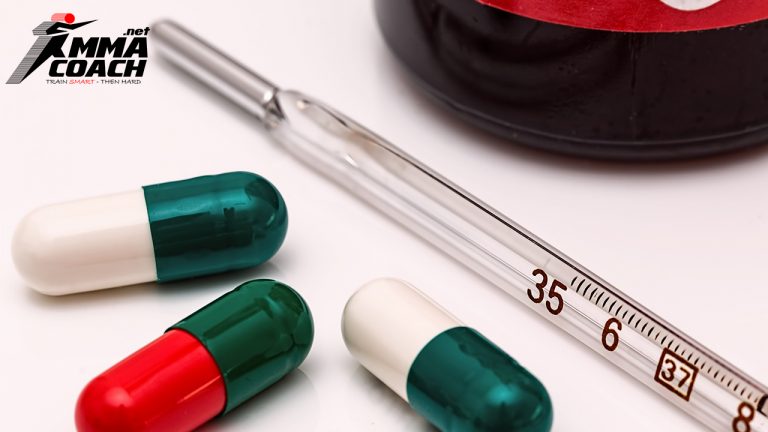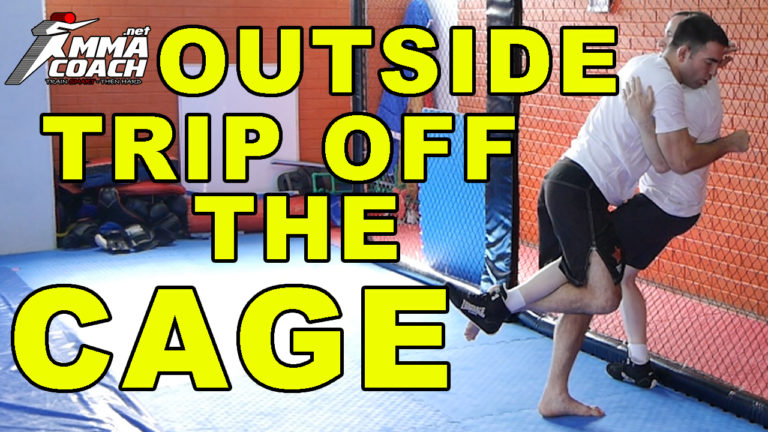How to transition from BJJ to MMA
[video_player type=”youtube” youtube_auto_play=”Y” width=”640″ height=”360″ align=”center” margin_top=”0″ margin_bottom=”20″]aHR0cHM6Ly95b3V0dS5iZS94Z19DaWpXVlJySQ==[/video_player]
If you are a BJJ player looking to enter into MMA, there are some things you need to know to make that transition successful. Besides the obvious ones like “learn striking”, I’ve got 9 tips for you:
1. Buttfloppers – start wrestling before trying MMA.
If you are one of those BJJ players that doesn’t engage in wrestling and just jumps or flops to guard, then you’re out of luck because wrestling is an integral part of MMA and if you managed to get by without it in BJJ, you will not be able to do so in MMA. When you have an opponent that is striking, it is very difficult to jump or flop to guard sucessfully. Even if you do, bottom is not a good place to be in in MMA, as I’ll explain later.
I’m not saying that all BJJers are buttfloppers – there are many that have embraced wrestling and judo, but if you’re not one of them – start now.
Having said that – there are ways of jumping guard that is good for MMA. Check out a video from Firas Zahabi on this subject. There is a link in the description. This way of guard jumping puts you either on top or in a position to submit your opponent.
But this shoudn’t be your go to way of getting the fight to the ground – just another option to have in your arsenal.
2. Top game priority
The effectiveness of the guard has dropped significantly since the first UFCs, and generally you do not want to be the bottom guy. There are not many BJJ fighters, even champions, that have modified their guard well for MMA.
A fighter with a good base, solid top control and a devastating GNP can wreck havock on a BJJer. Of course there are exceptions and one of them is Fabricio Werdum who is probably immune to GNP.
Even Damien Maia tries to stand up from the bottom and doesn’t play the guard game if he doesn’t have to.
So always strive to get on top and do not go on bottom voluntarily. Being on top gives you positional dominance, which is great with the judges, and more importantly places you in a position to hit. Punches tend to soften up the opponent and thus making it easier for you to get the submission. Or you just win with GNP.
3. Guard – be very close or very far
I did say to concentrate on top game, but there will be times when you will end up on bottom and in guard. When that happens, relax, don’t panic and work your technique.
You want to be very close to your opponent by using underhooks, overhooks or the Lister grip. These 3 are my go to grips. Some people also use the rubber guard and the rat guard with great success. When you keep your opponent close it is impossible to get hit.
You can also be far from your opponent which then makes it easier to stand up.
Mid distance is dangerous and that is when you get hit most often.
Switch guard priorities. Usually the priorities for a BJJer look like this: Submit – Sweep – Stand up. In MMA it should be: Stand up – Sweep – Sumbit.
Which leads us to number four which is:
4. Master the art of standing up
This is not as sexy or cool to learn as submissions or punches for example, but it is a very important skill to have in MMA. I can’t stress this enough. There are several ways of doing the technical stand up but it is beyond the scope of this video. So I’m just going to show two situations quickly and in the future I might do a standalone video on this subject.
When you have your opponent in your guard, expect him to try and stand up and rain down punches at some point. When he does that, immediatelly place your feet on his hips, push away and stand up.
Or you can create the distance by kicking the leg or up kicking him, and when the gap appears, go for the stand up. The point is to develop good timing which means you have to stand up as soon as there is distance between you and your opponent.
When he is in your guard, and he sits up to hit you, push his chest with your feet and stand up. If he posts on one foot, you can push his knee with your foot and stand up.
5. Guard passing – lead with the knee, not the head
In grappling, competitors usually assume this position when guard passing. If you did that in MMA, the first thing that would happen would be an upkick which would probably end the fight.
Instead lead with the knee, put your head back and then get close to your opponent, control the feet, hit or try to pass. I’m not going to get into guard passing in detail in this video. Just know that you need to assume the knee leading position and this is how you start passing the open guard in MMA.
6. Stick to solid basics most of the time
Fancy stuff can sometimes work, but good solid basics win fights most of the time, so it’s smart to invest your time in them. It’s all about probabilities and basics have the greatest chance of working.
7. Roll with punches, and gloves
Start rolling with 4 oz gloves just to feel the difference. Then incorporate punches, meaning GNP, and put on either 12 oz boxing gloves or a open handed equivalent with a lot of padding. Here is our suggestion.
This doesn’t mean you should hit hard in sparring. It just means you will have more protection. Go for 100 % speed and 10% power to the head. You can hit the body a bit harder.
The point here is to get used to rolling with punches which is a whole different world that pure grappling. You need to learn how to modify your grappling in a GNP situation.
Then you will see what works, what you must cut out from your repertoire and what must be added. Chances are you will be left with core basics.
8. Start with small shows
If you’re a big star in BJJ, then you might be tempted to go to big shows straight away. This is usually a mistake and you should start with small shows. Take Pavel Nastula for example. Although he is not a BJJer but a world class judoka, he is a typical example of a big star that had a “baptism by fire” so to speak. He had his MMA debut in Pride which was the biggest MMA promotion at the time, against Antonio Rodrigo Noguiera who was one of the best heavyweights at the time. Although courageous, that was not a good move. He should have started in smaller shows, worked on his MMA techniques and after a few fights compete in bigger shows.
9. Have patience
Every beginning is hard so have patience. It will be very tough at first since this is a new sport for you, but in time you will get the hang of it. Be patient, put in the work and it will pay off. But know that it will take a long time before you become good at it because MMA is very complex and you need to become good at a lot of it’s elements.
So if you don’t mind a long ride and can get through ups and downs, which will definitely happen, you’ll do fine.
Your identity will also change in time from a BJJ player into an MMA fighter.
If you’d like to learn how to fight on the ground in MMA, check out my GNP instructional. All of the subjects from this video are covered in great detailed in Total GNP Blueprint so if you’re interested, click here.
What do you think is important for an BJJer who is transitioning to MMA? Have I missed anything? Let me know in the comments bellow.
MMA Coach Store
A HUGE 50% discount is currently available on all our products. Check it out.
-
 Product on saleMMA Striking Made EasyOriginal price was: $300.00.$180.00Current price is: $180.00.
Product on saleMMA Striking Made EasyOriginal price was: $300.00.$180.00Current price is: $180.00. -
 Product on saleTotal GNP BlueprintOriginal price was: $250.00.$120.00Current price is: $120.00.
Product on saleTotal GNP BlueprintOriginal price was: $250.00.$120.00Current price is: $120.00. -
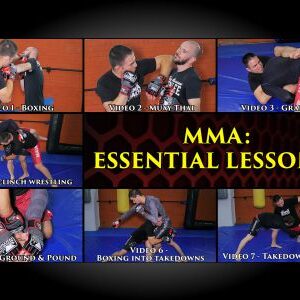 Product on saleMMA Essential Lessons 2Original price was: $280.00.$137.00Current price is: $137.00.
Product on saleMMA Essential Lessons 2Original price was: $280.00.$137.00Current price is: $137.00. -
 Product on saleMMA: Essential LessonsOriginal price was: $160.00.$77.00Current price is: $77.00.
Product on saleMMA: Essential LessonsOriginal price was: $160.00.$77.00Current price is: $77.00.
Six Cardinal Sins Of MMA Training
Sign up for our FREE video explaining 6 most common mistakes in MMA training. Fix them easily and see your MMA skills skyrocket.
